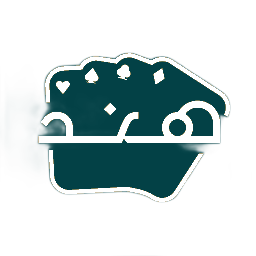San Gameplay (and Ashkal)
There are no trump cards in this game. The first player to play in the round sets the round suit, and all other players must follow suit. The highest ranking card played of the round suit would win the round. When a player is not the first to play in a round, he/she might be in a situation where he/she is not able to follow suit because there are no cards of the round suit in his/her hand. As such, the player can choose to play any card of any suit, and this card will not be able to win the round. As such, the player should choose to play low ranking cards with no point value if the opposite team is expected to win the round. What confusing about Balot and especially the San play, is that card ranks do not follow the usual order in which everyone who plays spades, kout, or poker is familiar with. The cards ordered according to their rank are as follows: A, 10, K, Q, J, 9, 8, 7 As such, if for example in a single round the 10, K, Q and 7 of spades are played, the player that played the 10 would win this round and get the points.
Hokom Gameplay
When a trump suit is set during the bidding process, whether from first call or second call, then the cards that follow the trump suit have special value. Gaming continues exactly like San for all suits, that is, all players must follow the suit of the first played card in the round, and the player with the highest ranking cards wins the round. The difference however, when a trump suit is set, is that when a player cannot follow round suit, he/she "must" play a trump suit if it is available. The trump suit would win the round if no other higher trump suit is played. Not that a player cannot play a trump suit if he/she can follow round suit and the round suit is not the trump suit. Another difference is that whenever a player gets his turn to play and he/she can win the current round with a trump card he/she could play then this trump card must be played. Even if there are other players that could play after him/her. The trump suit only differs in the ranking order also. Trump suit cards ordered based on rank are as follows (this is considered by some another confusing aspect about Balot): J, 9, A, 10, K, Q, 8, 7 Finally, if a player plays the highest ranking card available in a suit that he/she is sure of winning the round (with the exception of beating trumps of course), and that player has a team mate who is playing after him/her, then the player can choose to call "Ekka" while playing that card. Calling out Ekka would allow his/her team mate to not play a trump card if he/she cannot follow suit, and instead, play any suit and allow his/her team mate to win the round. However, if an opponent were to play a trump card, then Ekka would have no effect and the players team mate must play a higher ranking trump card than the one played or play any other suit if he/she cannot win the round.
Last Trick
Last trick is the last round played in a game. The team that wins the last trick automatically get 10 points for doing so.
Current Games
Kout Game
Balot Game
Hand Game
In-Progress
Trix Game
Dama
Vote For Our Next Game







 Cards
Cards
 Multiplayer
Multiplayer































 Single Player
Single Player



















Comments Log In | Sign Up